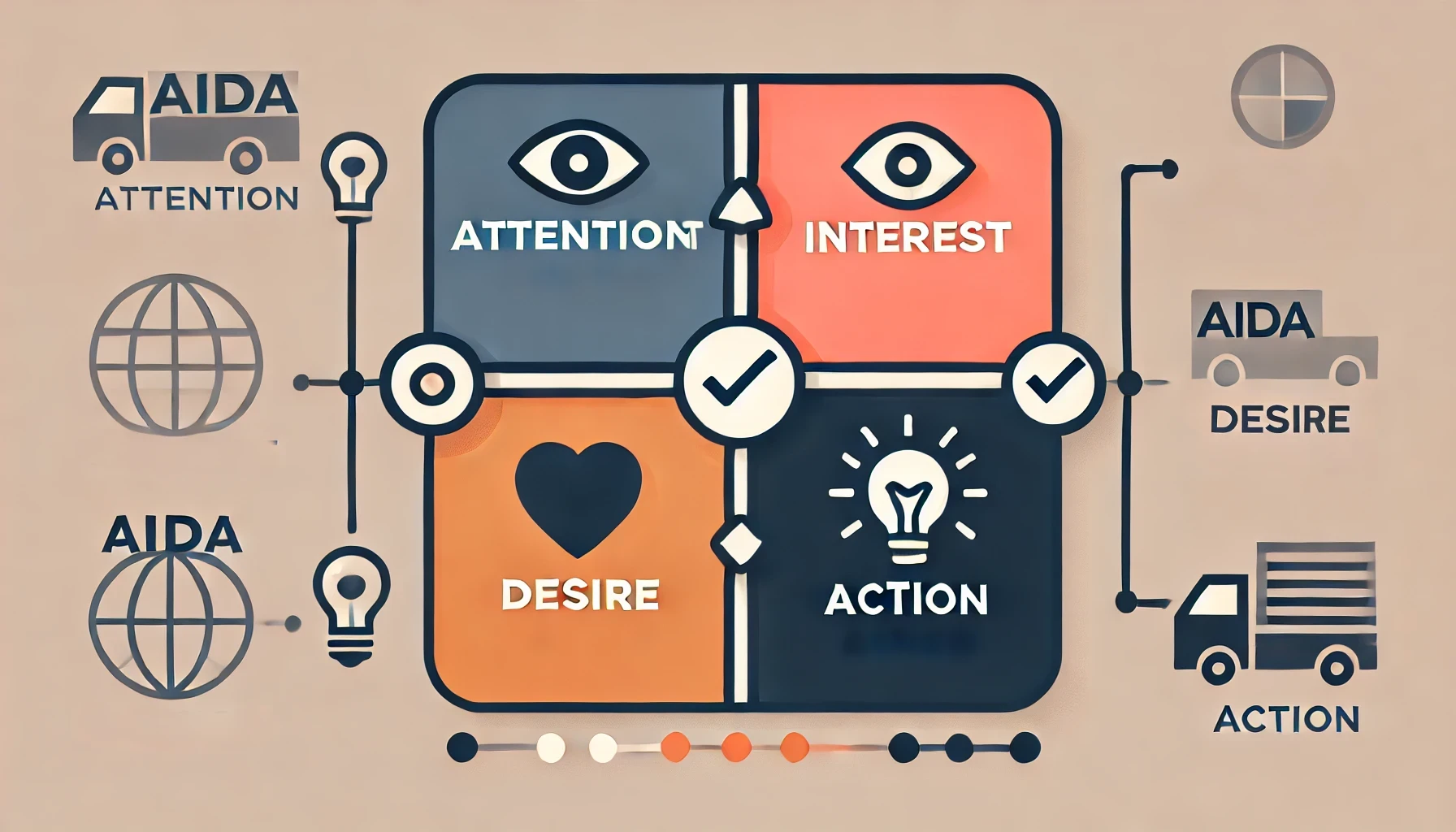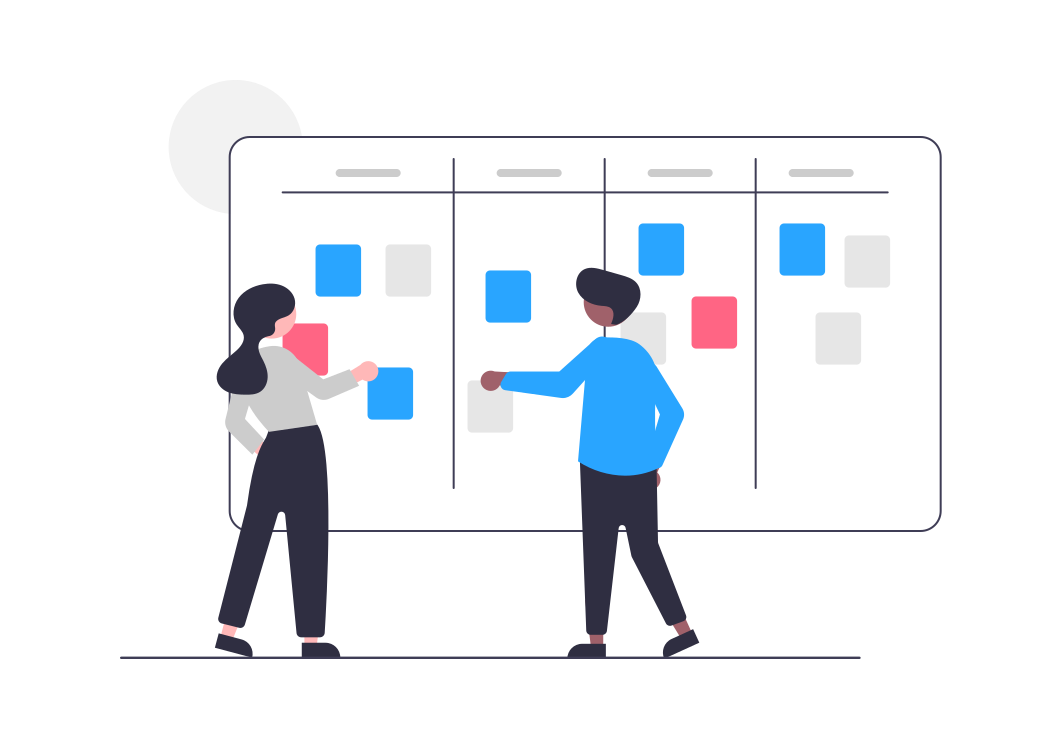In the fast-paced world of marketing and product management, capturing a customer’s attention is more challenging than ever. With countless products vying for attention, how can businesses stand out and guide potential customers from mere awareness to a purchase? Enter the AIDA model—a tried and true framework that has stood the test of time, guiding marketers and product managers to success. But what exactly is the AIDA model, and how can it transform your approach to engaging with your audience? Let’s dive in and uncover the secrets behind this powerful tool.
The Anatomy of AIDA: Attention, Interest, Desire, Action
The AIDA model breaks down the customer journey into four distinct stages: Attention, Interest, Desire, and Action. Each stage plays a critical role in moving a customer from being unaware of your product to becoming a loyal advocate. Let’s explore these stages in detail and see how they work together to create a seamless and effective customer experience.
1. Capturing Attention: The Art of the Hook
In a world where consumers are constantly bombarded with advertisements, capturing attention is no small feat. The first step in the AIDA model is all about making a splash and standing out from the crowd. It’s the difference between a passerby scrolling past your ad and stopping to take a second look.
How to Hook Your Audience:
- Visual Appeal: Use bold colors, striking images, and creative designs. Think about Apple’s iconic product launches with their minimalist yet stunning visuals.
- Unique Selling Proposition (USP): Highlight what makes your product unique. Is it a groundbreaking feature? An innovative design? Make sure it’s front and center.
- Unexpected Elements: Sometimes, a surprise or shock can be your best friend. Unconventional advertisements or thought-provoking statements can make people stop and think.
Example: Remember Nike’s unforgettable “Just Do It” campaign? The powerful imagery and inspiring stories of athletes not only grabbed attention but left a lasting impression, making Nike a household name.
2. Sparking Interest: The Deep Dive
Once you have their attention, the next challenge is keeping it. This stage is about engaging your audience with compelling content that speaks to their needs and desires. It’s the moment when a casual observer starts to think, “Tell me more!”
Building Engagement:
- Educational Content: Share informative articles, videos, and guides that explain how your product works and its benefits.
- Storytelling: Weave narratives that resonate emotionally with your audience. Share your brand’s journey, the challenges you overcame, and what drives your passion.
- Interactive Content: Engage your audience with quizzes, polls, or even virtual reality experiences.
Example: Tesla has mastered the art of generating interest. They offer detailed insights into their cutting-edge technology, making complex concepts like electric drivetrains and autopilot features accessible and exciting.
3. Creating Desire: The Irresistible Pull
Now that your audience is interested, it’s time to turn that interest into desire. This is where you make your product irresistible, the perfect solution to your audience’s problems or needs.
Fostering Desire:
- Benefits Over Features: Shift the focus from what your product is to what it does for the customer. How does it solve their problems or enhance their lives?
- Social Proof: Leverage testimonials, reviews, and endorsements. Seeing that others love and trust your product can tip the scales.
- Exclusivity and Scarcity: Nothing stokes desire like the fear of missing out. Limited-time offers, exclusive products, and early access can all create a sense of urgency.
Example: Luxury brands like Rolex create desire by showcasing not just their watches but the prestige and status associated with owning one. It’s not just a timepiece; it’s a statement.
4. Driving Action: The Nudge to Convert
The final stage is all about action. After building up attention, interest, and desire, it’s time to guide your audience to take the next step—whether it’s making a purchase, signing up for a newsletter, or downloading an app.
Encouraging the Leap:
- Clear Call-to-Action (CTA): Be direct. Use phrases like “Buy Now,” “Subscribe Today,” or “Download Now.” Make the next steps obvious and easy.
- Incentives: Sweeten the deal with discounts, free trials, or special offers.
- Smooth Experience: Ensure the process is as frictionless as possible. A cumbersome checkout process can lose a customer faster than you can say “abandoned cart.”
Example: Amazon’s streamlined checkout process, combined with one-click purchasing and personalized recommendations, makes it incredibly easy for customers to follow through with their purchases.
The AIDA Model in Action: A Real-World Example
Let’s see how the AIDA model comes to life in a product launch scenario. Imagine a tech startup introducing a new fitness app:
- Attention: The company launches a visually striking social media campaign with a bold tagline, “Transform Your Fitness Journey,” featuring eye-catching graphics and influencer endorsements.
- Interest: They provide in-depth blog posts and tutorial videos on how the app helps users set and achieve personalized fitness goals.
- Desire: The app’s website showcases success stories and testimonials from beta users who have seen significant improvements in their health and fitness.
- Action: A limited-time offer of a free three-month trial encourages potential users to download and start using the app immediately.
By carefully crafting strategies for each stage of the AIDA model, the company effectively guides potential customers from initial awareness to becoming active users of the app.
AIDA—The Roadmap to Customer Conversion
The AIDA model is more than just a marketing tool; it’s a roadmap that guides businesses in nurturing potential customers through each stage of the buying journey. Whether you’re launching a new product, refining your marketing strategy, or optimizing your sales funnel, the AIDA model provides a structured approach to capturing and converting your audience. By understanding and applying the principles of AIDA, you can not only attract attention but also build lasting interest, create deep desire, and drive decisive action. In a world where the battle for customer attention is fiercer than ever, mastering the AIDA model could be your secret weapon.




